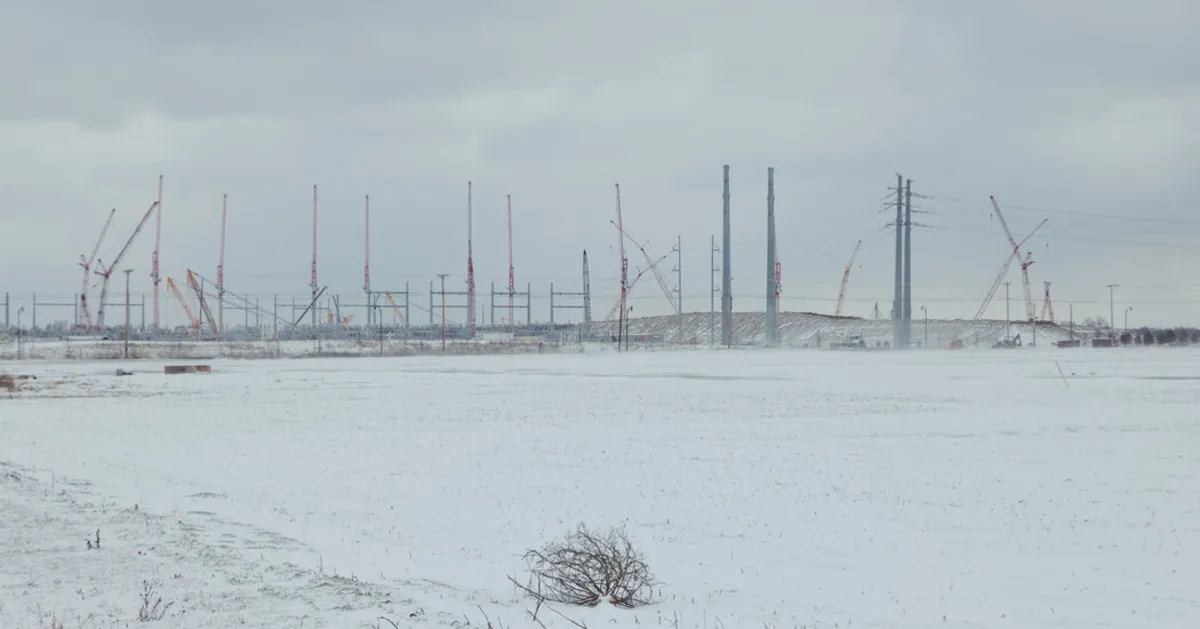
At the end of July, Ohio Governor Mike DeWine expressed optimism regarding Intel Corporation’s plans to establish multibillion-dollar semiconductor factories in the state. However, the landscape has shifted dramatically this week, as former President Donald Trump publicly criticized Intel's new chief executive, Lip-Bu Tan, prompting a Republican senator to call for investigations into the delays surrounding this ambitious construction project located just outside of Columbus.
On Thursday, Trump demanded Tan’s resignation, citing his previous connections to Chinese companies. This controversy adds to the challenges faced by a company that DeWine and other prominent members of Ohio’s Republican Party had touted as a catalyst for a manufacturing renaissance, aiming to transform the state into a “Silicon Heartland.” Intel has secured approximately $1.5 billion in federal funding and a $2 billion incentive package from Ohio to support the construction of these factories, but delays have plagued the project. Intel has now indicated that the factories may not commence operations until at least 2030.
The setbacks affecting Intel in Ohio underscore the significant risks involved for federal and state officials who financially supported the company, once a leader in semiconductor manufacturing. Today, the industry is largely dominated by the Taiwan Semiconductor Manufacturing Company (TSMC). The challenges facing Intel reflect broader difficulties that the Trump administration encounters as it seeks to relocate semiconductor production to the United States, moving away from reliance on Asian manufacturers.
Senator Bernie Moreno, a Republican from Ohio, voiced his frustration on social media, stating, “It’s pretty obvious that Intel has failed to meet the commitments it made to the people of Ohio.” He raised concerns about Tan’s alleged connections to the Chinese Communist Party (CCP), insisting that the CEO should resign, the project should be completed, and a fraud investigation should be initiated in Ohio.
Building semiconductor factories is not only incredibly costly but also highly complex. Intel has struggled to secure enough customers to remain viable while investing heavily in construction efforts. After incurring an $18.8 billion loss in its foundry division in 2024, the company underwent significant restructuring, including the ousting of its previous chief executive and the elimination of 15,000 jobs. This turmoil has led Intel to consider various strategies, such as potentially selling its manufacturing operations to TSMC.
In response to inquiries, an Intel spokeswoman referred to the company’s latest earnings report from July, which reaffirmed its commitment to completing the Ohio project, albeit at a reduced pace to align with customer demand. Dan Tierney, press secretary for Governor DeWine, voiced continued optimism, stating, “We expect chips to be made in that facility.” He highlighted that Intel has already invested $7 billion in the Ohio project, which is significantly more than the state’s incentive package, some of which involves tax credits linked to job creation by the end of 2028.
As allegations against Tan circulate, DeWine has expressed concern regarding any potential involvement with the CCP that could harm national interests but has refrained from making premature judgments. “We don’t have all the facts, and we will need to see what facts come out,” said Tierney.
The stakes are exceptionally high for both Intel and Ohio, as semiconductor chips are critical components in various technologies, from cellphones to fighter jets. Both Trump and President Joseph R. Biden have emphasized the importance of domestic production for national security, especially given that over 90% of the most advanced chips are manufactured in Taiwan, an island claimed by China. In 2022, Congress, under Biden’s leadership, passed a bipartisan bill to invest billions in subsidies aimed at bolstering semiconductor production in the U.S.
Intel was allocated up to $7.9 billion for its U.S. manufacturing initiatives, though only about $2 billion has been disbursed thus far. Trump has criticized this subsidy strategy, arguing for the necessity of tariffs to incentivize domestic manufacturing. He has even threatened to impose a 100% duty on numerous imported chips.
Tan, who assumed leadership at Intel in March, was initially seen as a potential savior for the struggling company. A seasoned investor in Silicon Valley, he has a background in semiconductor start-ups. However, on July 28, a company he once managed pleaded guilty to transferring technology that fell under U.S. export controls to Chinese entities. Although the plea agreement did not name Tan, concerns have been raised by Senator Tom Cotton regarding his knowledge of the illicit activities.
In a recent statement, Tan, who is an American citizen born in Malaysia, has pushed back against the misinformation surrounding his past roles, asserting his commitment to U.S. national and economic security. He emphasized that he has always operated within strict legal and ethical standards and is engaging with the administration to clarify any concerns that have arisen.
Additionally, Senator Jon Husted, another Ohio Republican who supported public funding for the Intel factory, reiterated the necessity of domestic semiconductor production, stating, “Producing the world’s most advanced high-tech chips in the U.S. is not just economic policy — it’s a national security imperative.” He emphasized that any delays in achieving this goal jeopardize the country’s safety.
State Senator Bill DeMora, a Democrat representing Columbus, criticized Ohio Republicans for using Trump’s attack on Tan as a distraction from the stalled project, labeling it a “boondoggle.” He expressed skepticism about the project’s future, suggesting that the political narrative is an attempt to shift blame for the delays and difficulties faced by Intel.